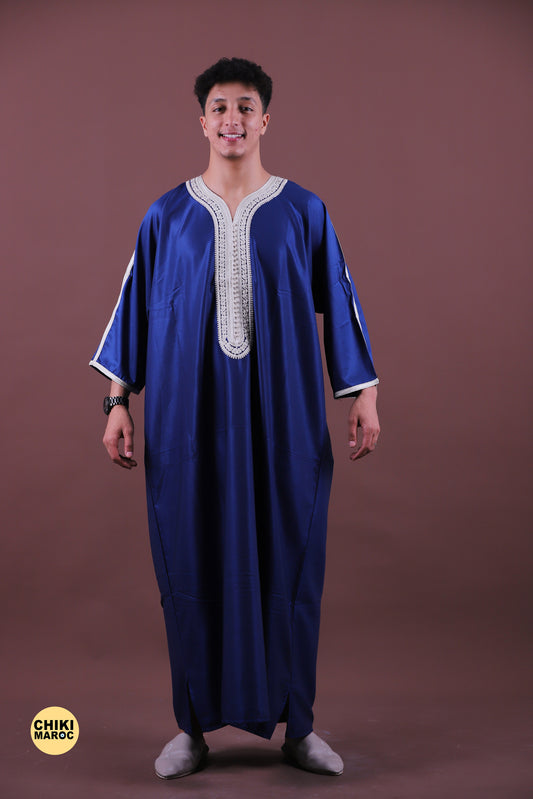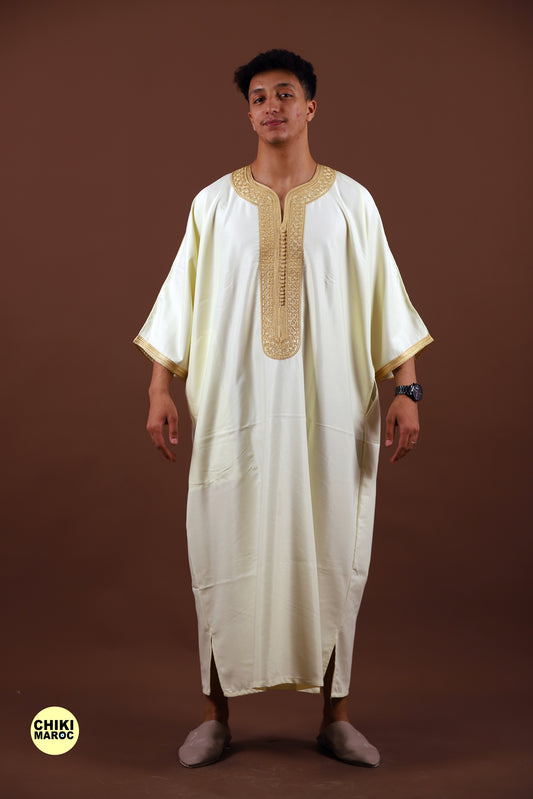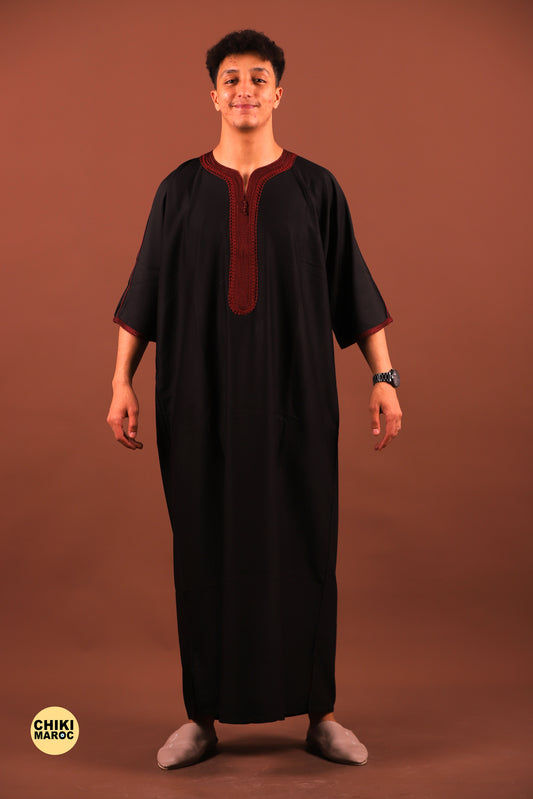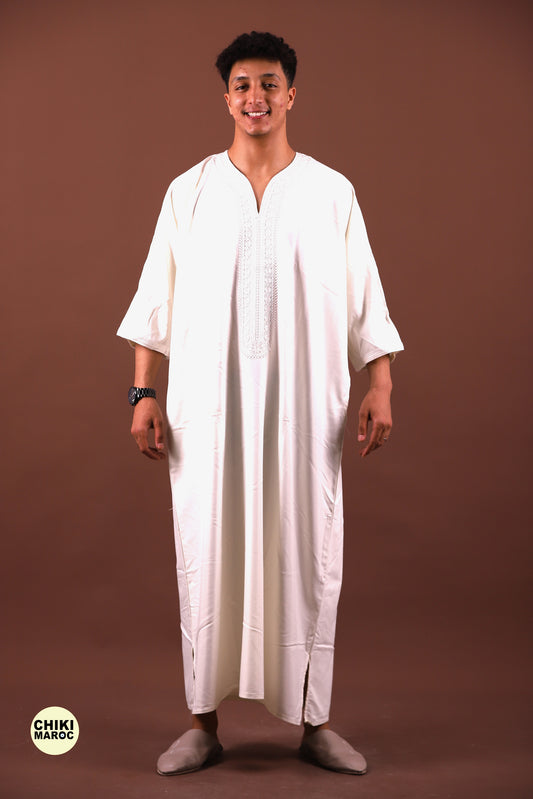Moroccan kaftan dresses are not just garments; they are embodiments of Moroccan culture, celebrated for their elegance, versatility, and deep-rooted symbolism. Originating in Morocco, these garments have evolved over centuries, blending traditional craftsmanship with contemporary fashion trends. In this comprehensive guide, we delve into the rich history, diverse styles, and occasions where Moroccan kaftans shine, offering insights to help you navigate the world of Moroccan fashion with grace and appreciation.
History and Cultural Significance of Moroccan Kaftans
Moroccan kaftans have a storied history that dates back to the medieval times of the Maghreb region. Originally worn by Moroccan royalty and nobility, kaftans were symbols of status and prestige. Crafted from luxurious fabrics such as silk, brocade, and velvet, these garments were adorned with intricate embroidery and embellishments that showcased the craftsmanship of Moroccan artisans.
Traditional vs. Modern Moroccan Kaftan Styles
Traditional Moroccan Kaftans: Traditional Moroccan kaftans are characterized by their loose, flowing silhouette and exquisite craftsmanship. They often feature elaborate embroidery inspired by Moroccan geometric patterns, floral motifs, and Arabic calligraphy. Traditional kaftans are worn for special occasions such as weddings, Eid celebrations, and cultural festivals, where they embody the cultural heritage and elegance of Moroccan fashion.
Modern Moroccan Kaftans: In contemporary Moroccan fashion, kaftans have evolved to incorporate modern aesthetics while preserving their cultural essence. Modern Moroccan kaftans may feature sleeker cuts, contemporary prints, and lighter fabrics, making them suitable for both formal events and everyday wear. Designers in Morocco continue to innovate, blending traditional techniques with global fashion trends to create kaftans that resonate with modern consumers.
Styles and Designs of Moroccan Kaftan Dresses
Moroccan kaftans come in a variety of styles and designs, each reflecting the diversity and creativity of Moroccan fashion:
-
Embroidered Moroccan Kaftans: These kaftans are adorned with intricate embroidery that often tells stories of Moroccan craftsmanship and heritage. They are cherished pieces worn by Moroccan women during significant life events.
-
Printed Moroccan Kaftans: Printed kaftans showcase Moroccan-inspired designs such as Moorish tiles, Berber patterns, and desert landscapes. They offer a contemporary twist on traditional styles and are favored for their artistic appeal.
-
Caftan Dresses: Caftans, a variant of the kaftan, are tailored to accentuate the female form with a more fitted silhouette. They are popular choices for Moroccan women looking to make a statement with elegance and sophistication.
Occasions to Wear Moroccan Kaftan Dresses
Moroccan kaftans are versatile garments that are suitable for various occasions and settings:
-
Weddings: Moroccan brides often wear elaborate kaftans adorned with gold embroidery and jewels, symbolizing their cultural heritage and beauty.
-
Eid Celebrations: During Eid al-Fitr and Eid al-Adha, Moroccan families gather in their finest kaftans to celebrate the end of Ramadan and the Hajj pilgrimage.
-
Cultural Festivals: Moroccan kaftans are prominently featured in festivals such as the Fez Festival of World Sacred Music and the Marrakech International Film Festival, where they embody the country's artistic and cultural diversity.
-
Everyday Wear: Lightweight Moroccan kaftans made from cotton or chiffon are worn by Moroccan women for everyday activities, providing comfort and elegance in warm climates.
Styling Tips for Moroccan Kaftan Dresses
-
Accessories: Enhance your Moroccan kaftan with traditional Moroccan jewelry such as silver fibula brooches, Berber necklaces, and intricate henna designs on hands and feet.
-
Footwear: Pair your kaftan with Moroccan slippers known as babouches or elegant sandals adorned with Moroccan-inspired designs.
-
Layering: In cooler weather, layer your kaftan with a Moroccan-style shawl or cape to stay warm while maintaining your sense of style.
Buying Guide for Moroccan Kaftan Dresses
When purchasing a Moroccan kaftan, consider the following factors to ensure authenticity and quality:
-
Fabric: Choose fabrics such as silk, satin, brocade, or chiffon, which are favored for their luxurious feel and ability to drape elegantly.
-
Detailing: Look for kaftans with meticulous embroidery, sequins, and beadwork that reflect the craftsmanship of Moroccan artisans.
-
Fit and Comfort: Select a kaftan that fits comfortably and complements your body shape, whether you prefer a loose or more fitted silhouette.
Conclusion
Moroccan kaftan dresses embody the essence of Moroccan culture, blending tradition with contemporary fashion to create garments that are both timeless and relevant. By understanding the rich history, diverse styles, and occasions where Moroccan kaftans shine, you can embrace these iconic garments with pride and appreciation for their cultural significance.
Celebrate the beauty and elegance of Moroccan fashion with kaftan dresses that reflect your personal style and cultural heritage, making every occasion a celebration of Moroccan craftsmanship and creativity.




